I have just spent some of the most beautiful days of my life in Croatia. I came for the wine (which did not disappoint!!), hosted by the Festival Vino Dalmacije at the Le Meridien Split, and found myself utterly spellbound by the dramatic beauty of the Adriatic Sea, lush vineyards and incredible local artisans. The April weather was outstanding, perfect 60 and 70 degree days with light breezes and occasional afternoon storms.
A truly diverse region geographically, Dalmatia runs along the east shore of the Adriatic Sea, composed of hundreds of islands, a mountainous region, and several peninsulas. Like the numerous islands, there is also an incredible diversity of grapes and styles in their wine. Winemaking in the Dalmatian region of Croatia dates back some 3800 years, and the region heavily features its indigenous grapes and traditions in its wines.
Over 10 days in Croatia, I sampled 82 different local wines. Yes, 82 different wines. While I am exhausted and need to rest my body and liver, I don’t regret a single one.
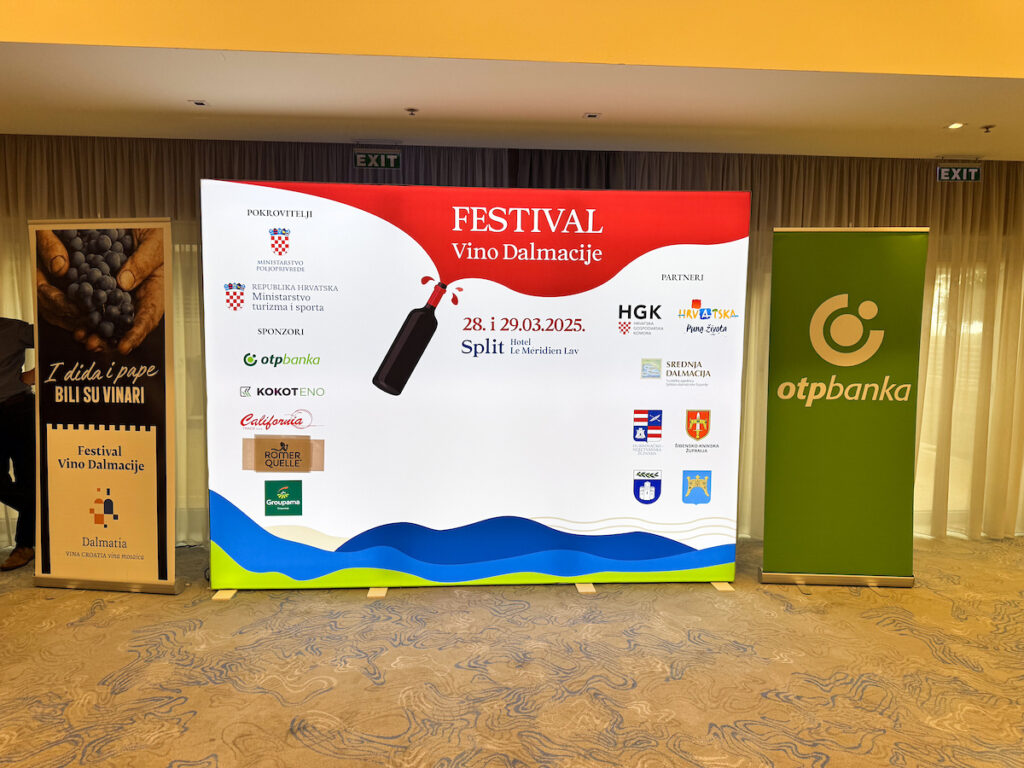
Day One & Two: Festival Vino Dalmacije (Friday & Saturday March 28 – 29)
Split is central Dalmatia’s largest city, home to fascinating architecture, rich culture and fabulous food.
I checked in at the Le Meridien Split, and immediately all I could think was “gorgeous”. It’s located a one minute walk from the beach, right on the marina, with paved walkways around the water and stunning views. I could see the Adriatic from my room for gorgeous sunrise views.
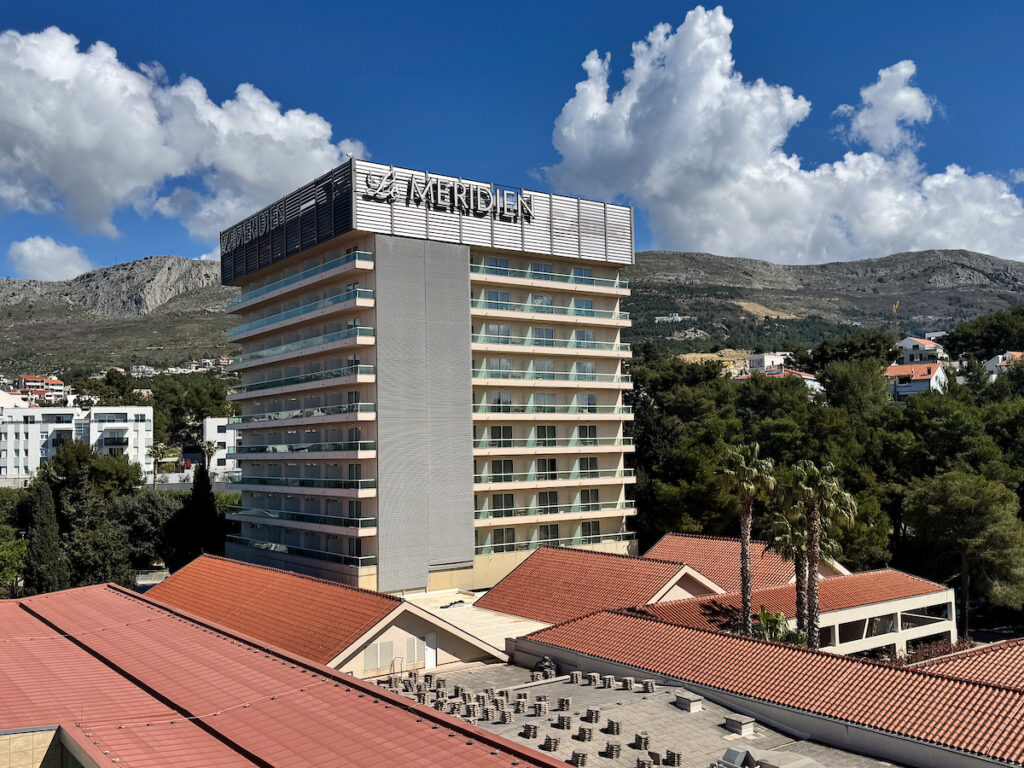
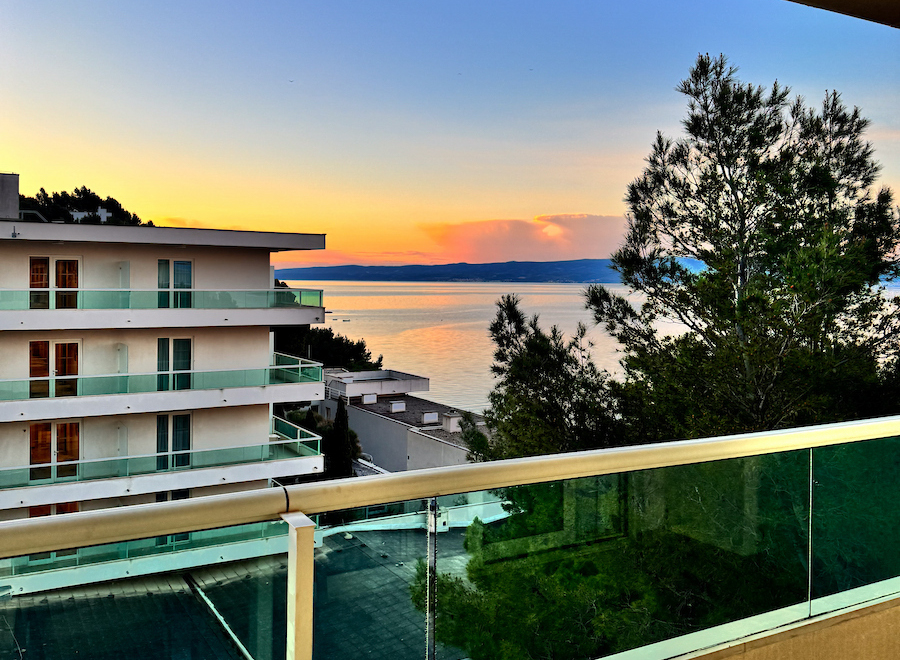
With the marina right there, the Le Meridien hotel is located in a beautiful location outside of Split’s city center.
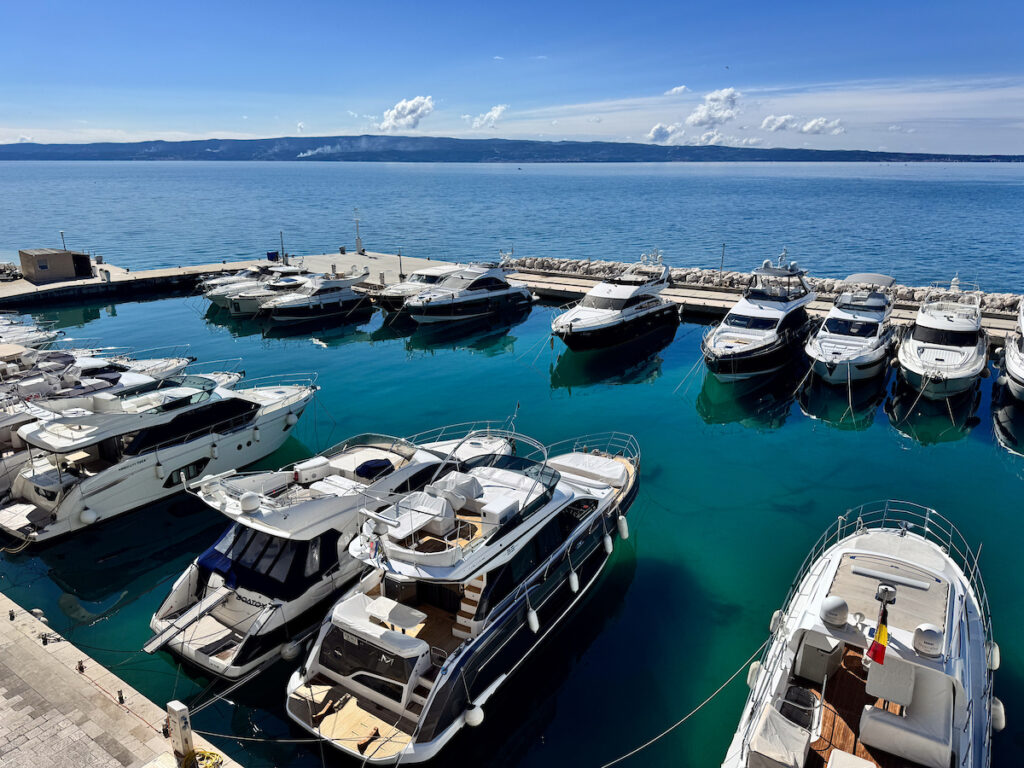

Split is an amazing city by the sea and even the ancient Roman buildings were built in the 3rd century for the emperor’s retirement residence and are some of the most preserved in the world, now used throughout the city as shops and restaurants. Even the ancient emperors of Rome wanted to retire here!
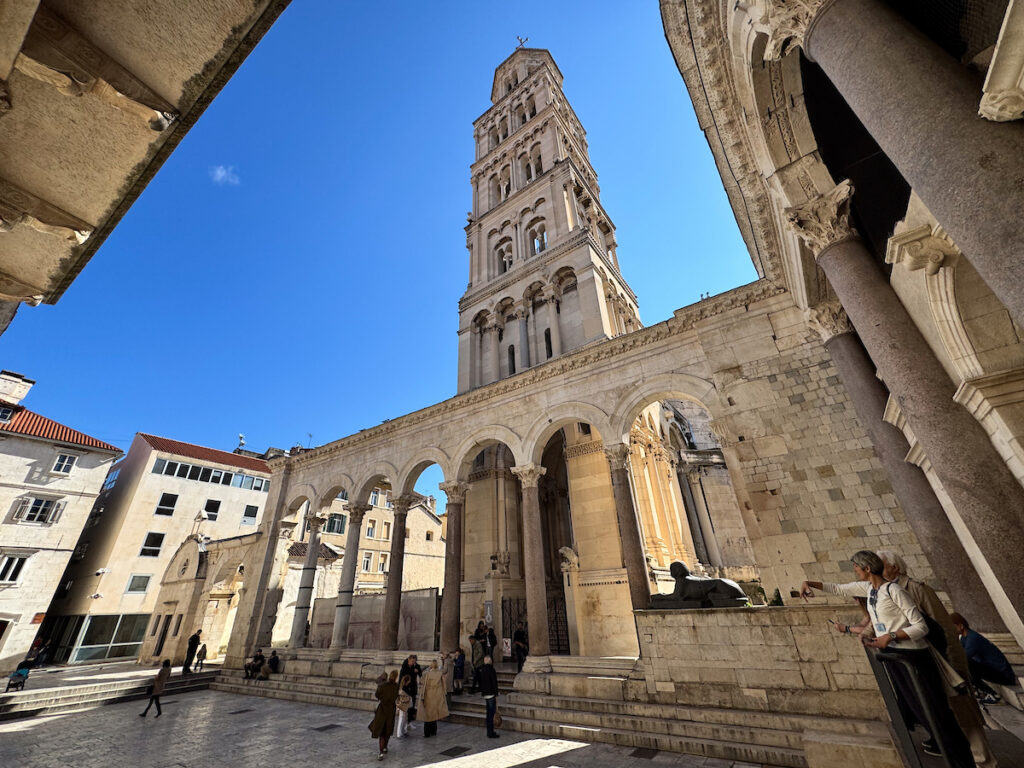
Immediately upon arrival, I went down to the festival and got to work right away, learning about the history and varieties of wine in Dalmatia – utterly fascinating. While the region has been making wine for almost four millenia, the last 35 years have seen an incredible renaissance of traditions and focus on indigenous wines in the region. Under Yugoslav communist rule in the late 20th century, wine production was state owned and focused almost entirely on quantity (not quality) and only since Croatia’s independence in 1991 have winemakers been able to go back to focusing on creating unique and beautiful wines that truly reflect Dalmatia’s unique terroir.
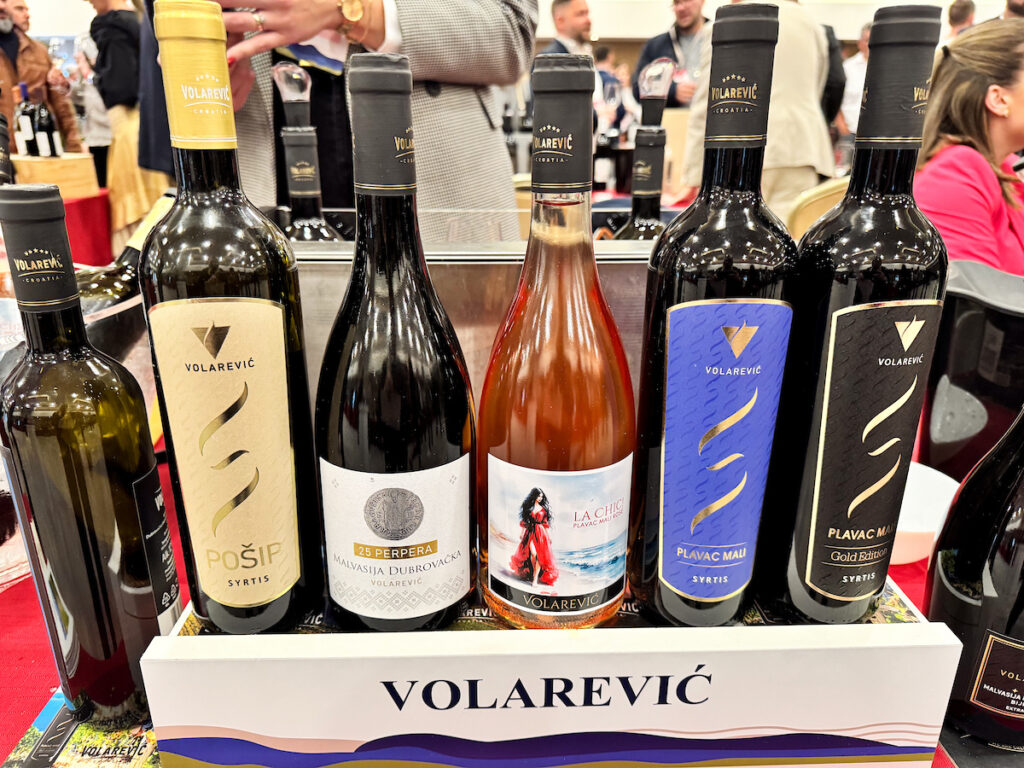
You may not see much Croatian wine at your grocery or local wine store because it’s all small production and consumed locally, but if you see it, I highly recommend trying it! Or better yet, visit Croatia and try out all the unique varieties yourself.
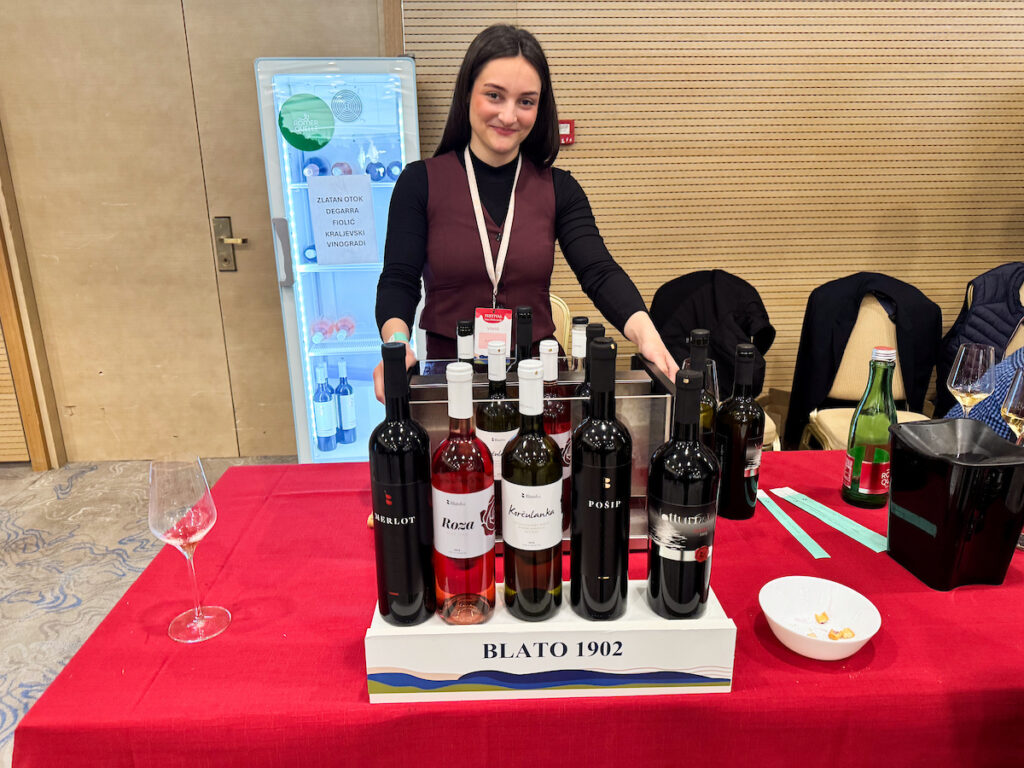
66 wineries participated in the festival, all local to Dalmatia. Of the 130 distinct indigenous varieties of Dalmatian wine grapes, I must have tasted at least half.
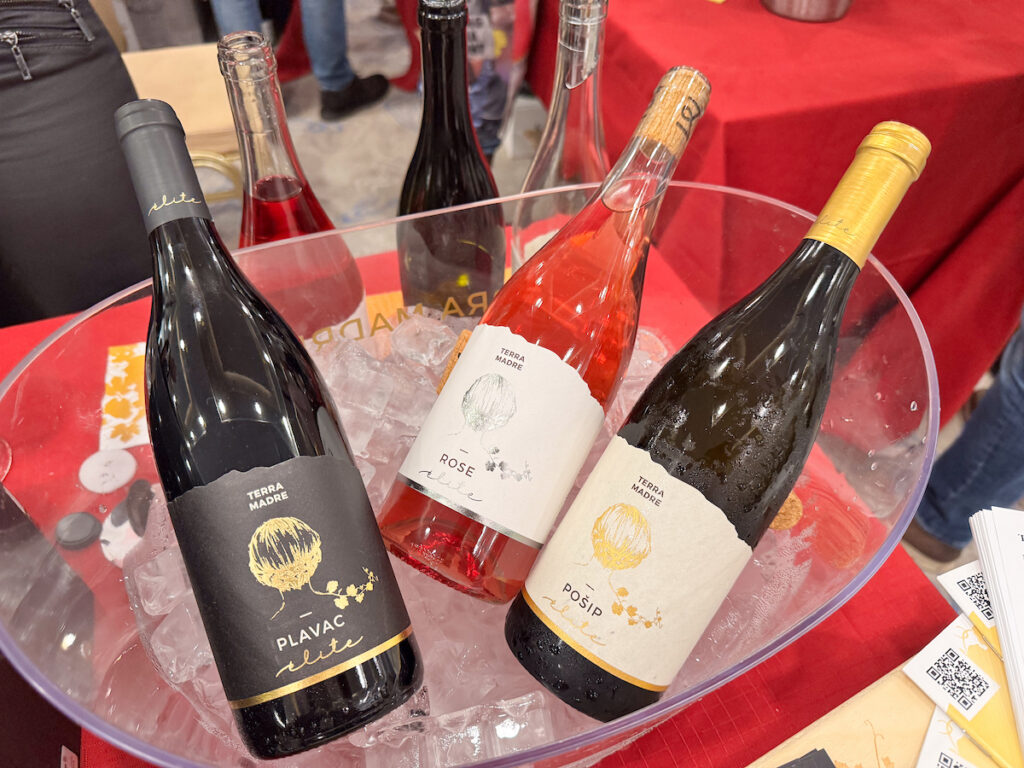
The festival lasted 1-7 p.m. Friday and Saturday and I tasted and tasted and tasted. I tried everything from a sparkling Blanc de Chardonnay from Plešivica to an incredible Plavac Mali rosé from Miljas Winery in Mihanici.
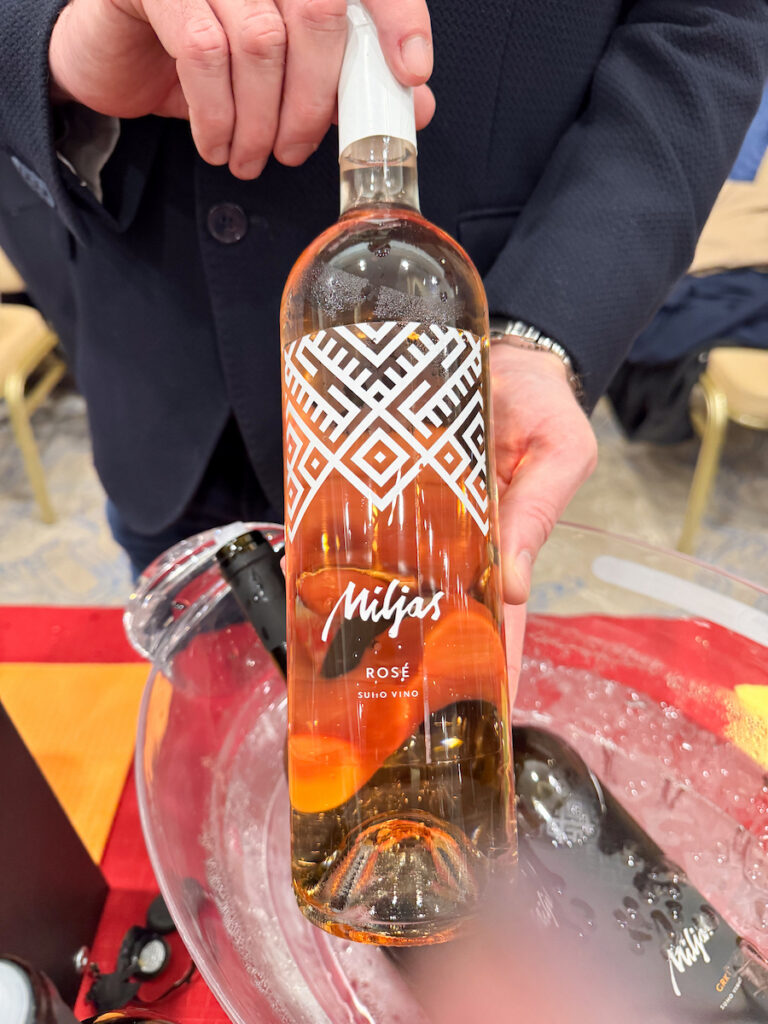
For lunch on Saturday, we went over to Konoba Nikola for traditional local cuisine in a tiny family run restaurant. The father of the current owner opened the restaurant 25 years ago, right in the place he was born. There are only 8 tables and 24 chairs, and the most incredible fresh scampi in butter I have ever tried in my life. Everything is from Croatia from the olive oil and salt to the amazing seafood.
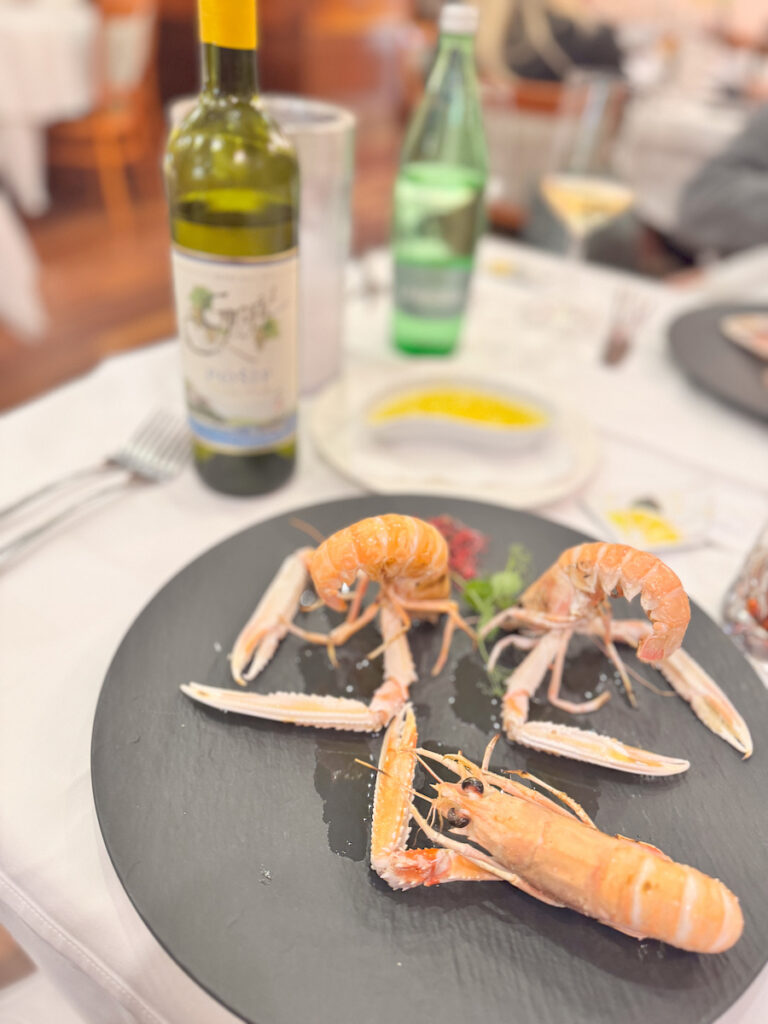
Nikola also introduced us to a fish I’d never had before – the John Dory, known as “St. Peter’s fish”, because the black circular spot on the side of the fish is said to be the print of St. Peter’s thumb when he plucked it from the ocean. After lunch we went back to the festival to taste more incredible local wine.
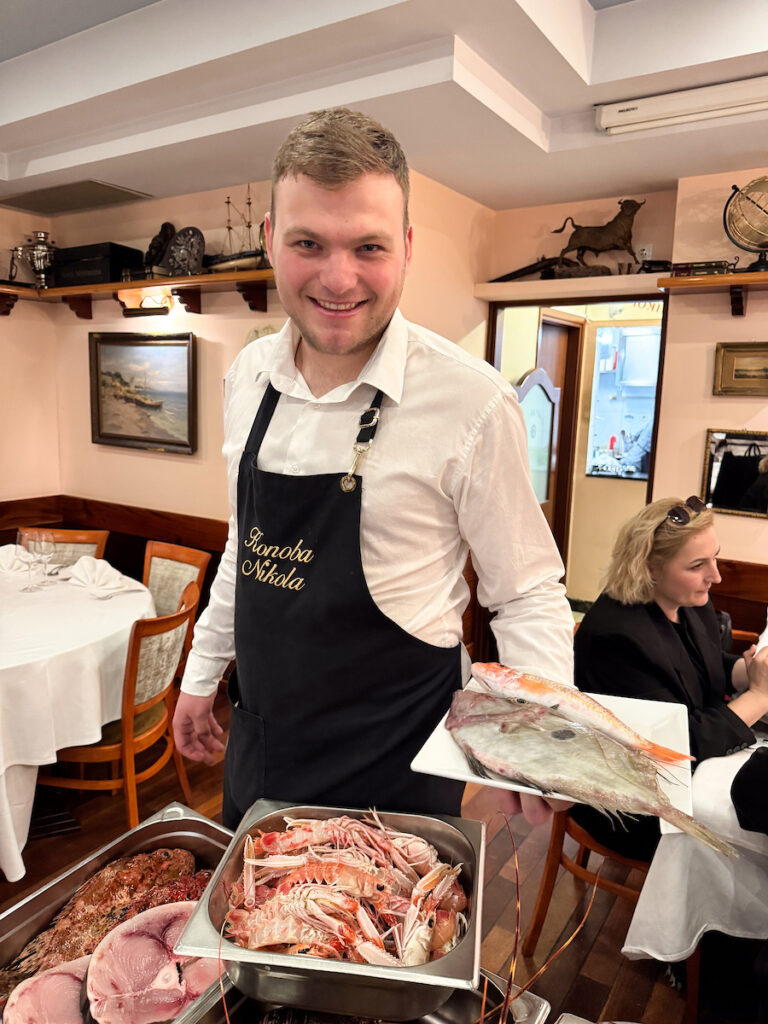
One of the most common wine varieties is Pošip white grapes, and I was so shocked at the drastically different taste of the wines based on the winery. You don’t always find that big of a difference in the taste of a single grape in what’s commercially sold in the US. You can sometimes find more interesting flavors in U.S. tasting rooms, but your more likely to find just the popular styles.
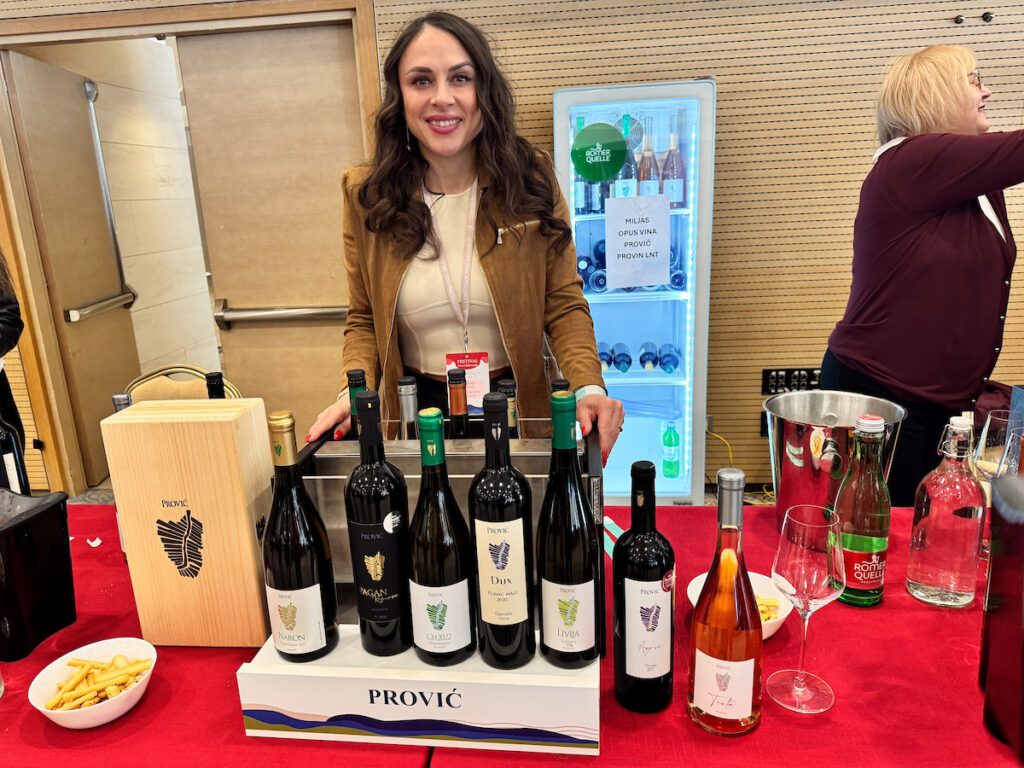

Every wine I tried was unique. Pošips range the gamut from sweet to very dry, and the aging processes had a huge effect on the flavor as well, which I loved to explore as I moved through the room. I found that I much prefer a Pošip from a stainless steel barrel to an oak, that clean fresh taste is so perfect for me. The Rhapsody Posip from DEAK winery blew me away and was my overall favorite white wine.
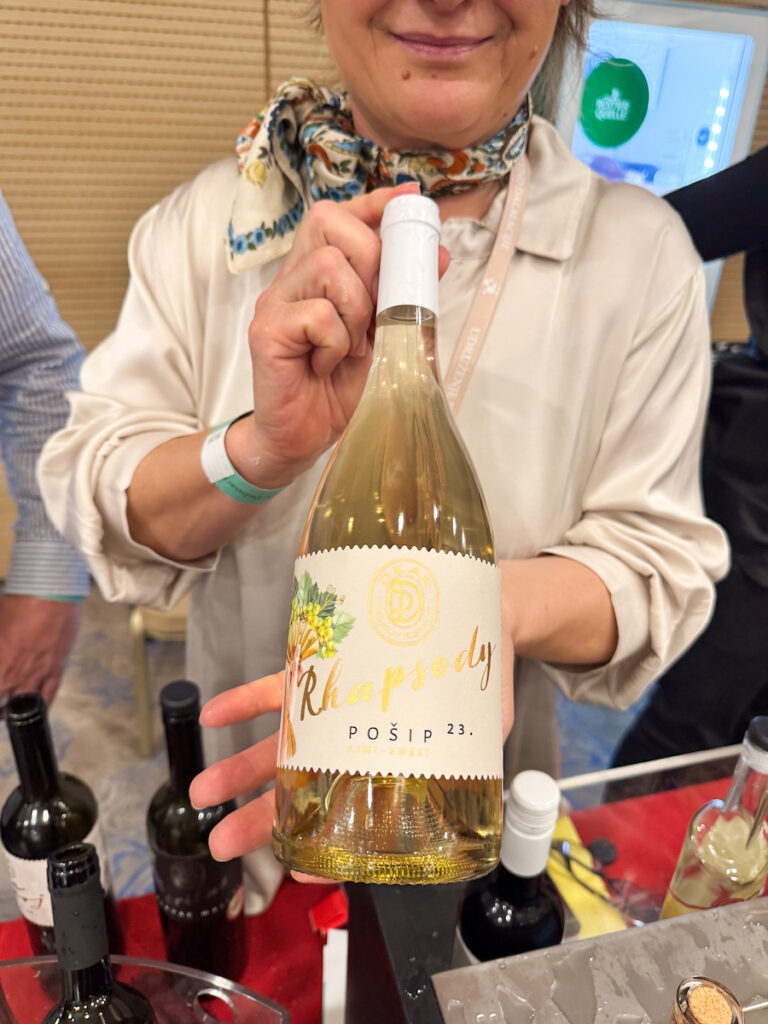
After the festival ended, we went to dinner at Restaurant Kadena for more gorgeous seafood. We had pasta carbonara and suisse char, more John Dory and Sea Bream. Not to mention more local wine…
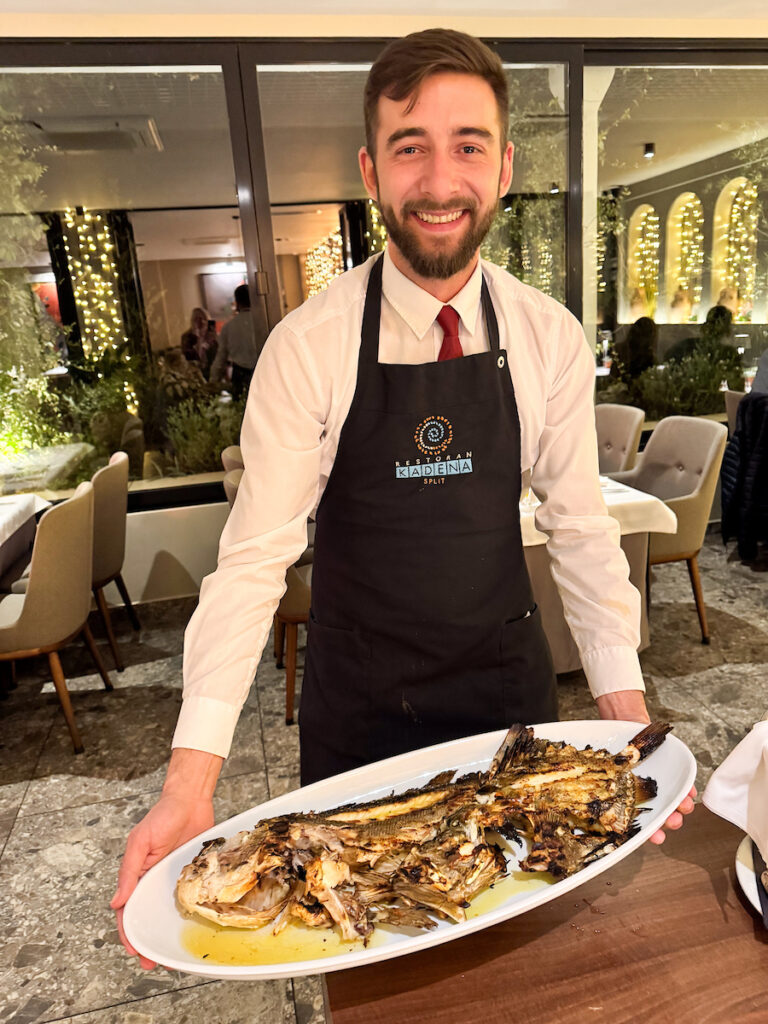

At some point, I took a breather from all the wine to look out over the sea and enjoy the hotel’s beautiful views. An afternoon rainstorm brought gorgeous double rainbows. With the fabulous wine and great views, I definitely felt like it was a good omen for my trip.
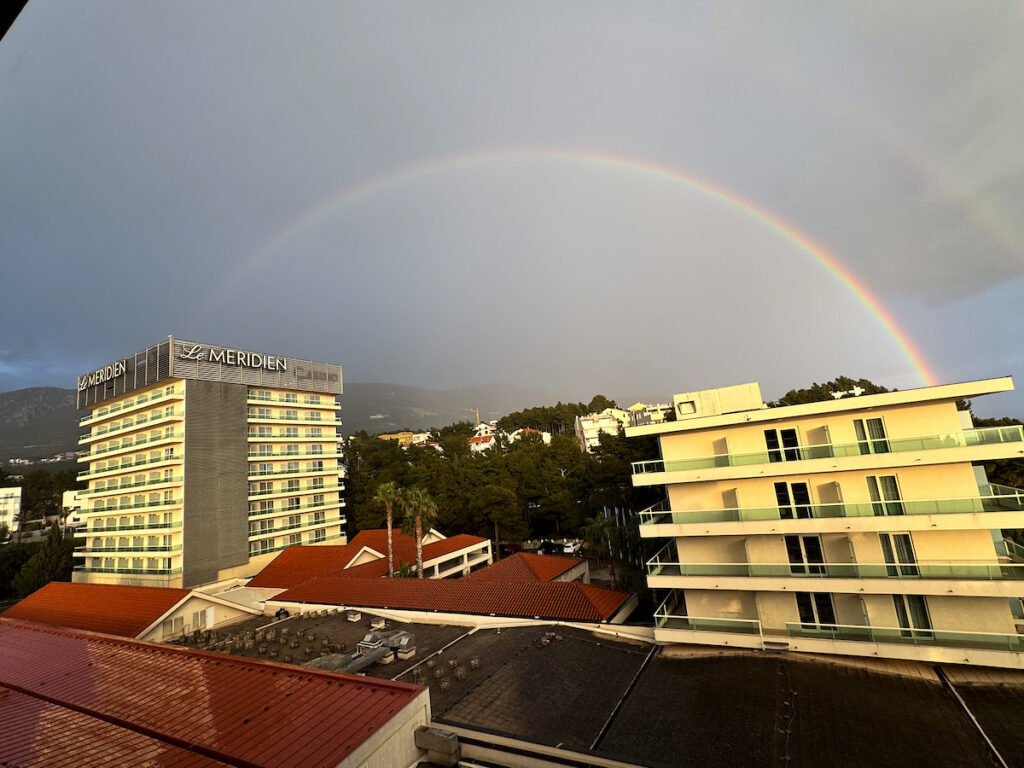
Day 3: Local Wine Tasting In Split (Sunday, March 30)
Today we visited two local wine bars in Split and enjoyed a delicious late lunch at Kastel Sikuli Winery in Kastel Stari about 30 minutes away from the city.
First, we stopped at Hvar Hills Wine Bar. We met the owner of the tasting room and bar, Mario Jeličić Purko, who also owns Hvar Hills Winery, and enjoyed a private tasting with delicious (and huge!!) charcuterie spread with a range of local meats and cheeses.
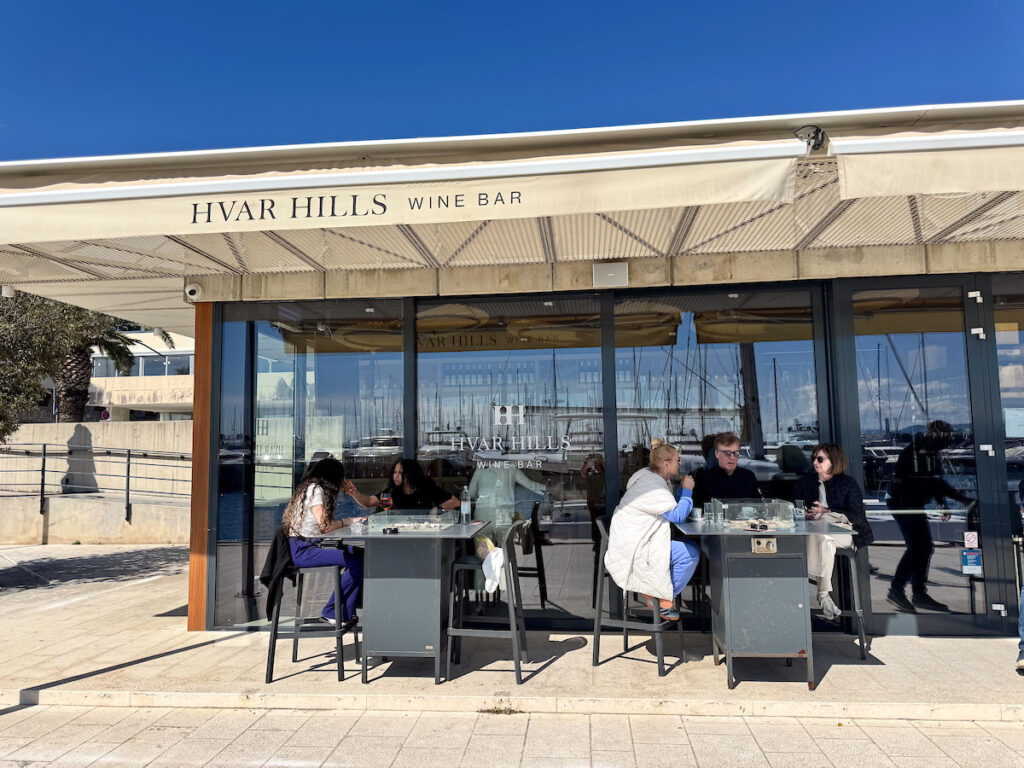
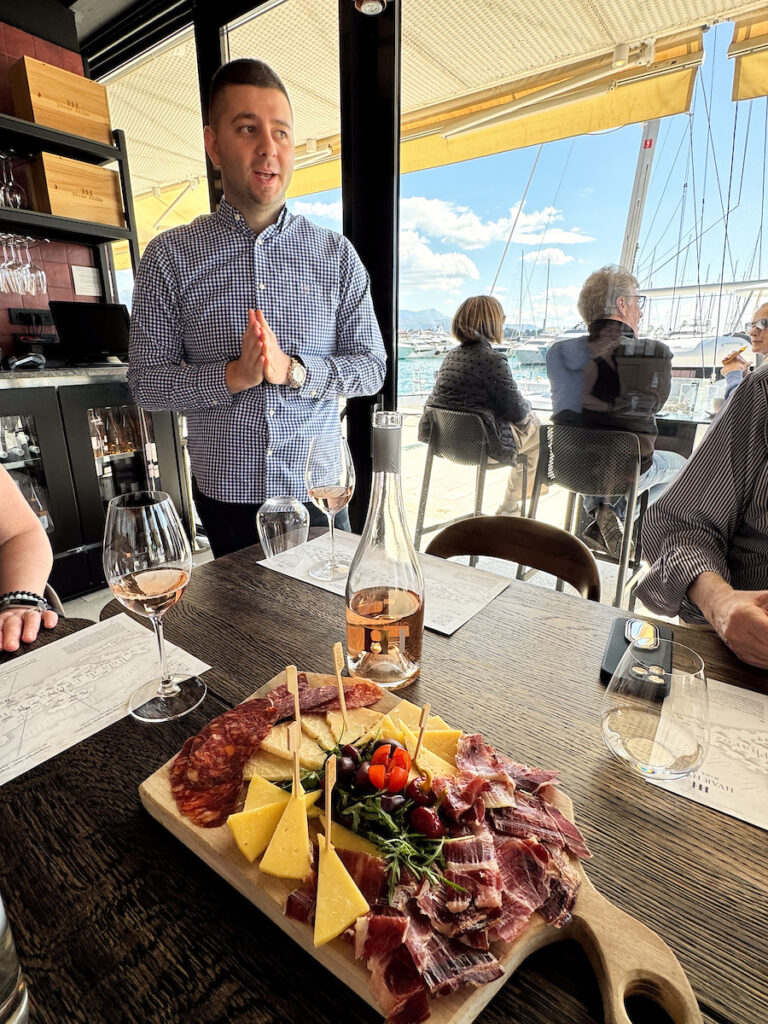
We tried seven wines in total starting with a pleasant syrah grenache blend, the rosé Pius 2024. The visit included some interesting moments, such as tasting the Bogdanuša 2024 (also the name of the grape, which means “Given by God”), which growers cultivate and produce only on the island of Hvar. They age it as a light white wine in stainless steel. Refreshing and tasty with cheese.
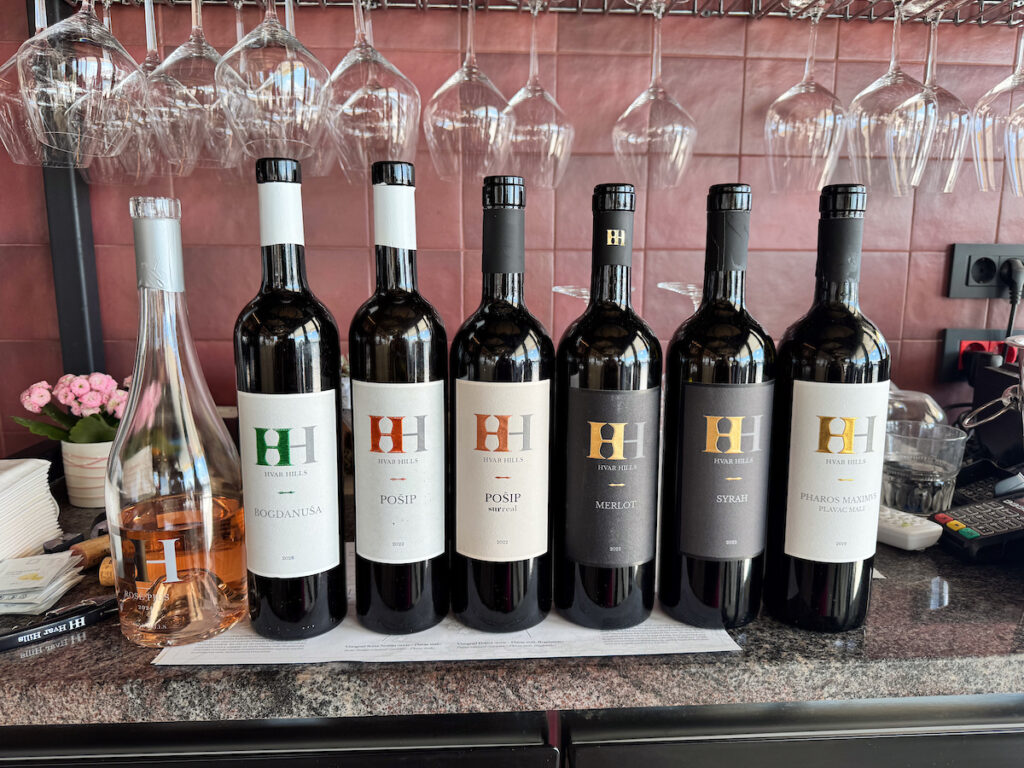
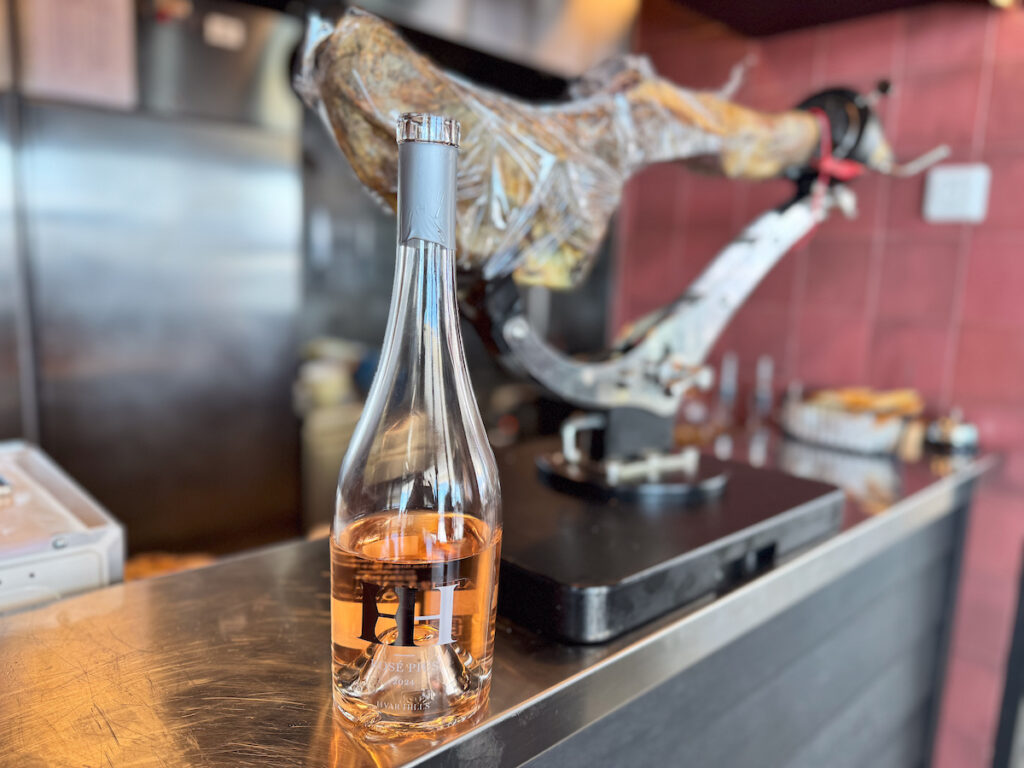
We also tried two different Pošips. One more acidic and refreshing, wIth 10% in oak barrels and the rest on stainless steel, and the other aged 100% on oak barrels made from grapes grown exclusively on Hvar. It was hand stirred to move around the lees (sediment), aged 6 months that way, and then aged an additional six months with the lees removed. A labor intensive wine with a powerful flavor.
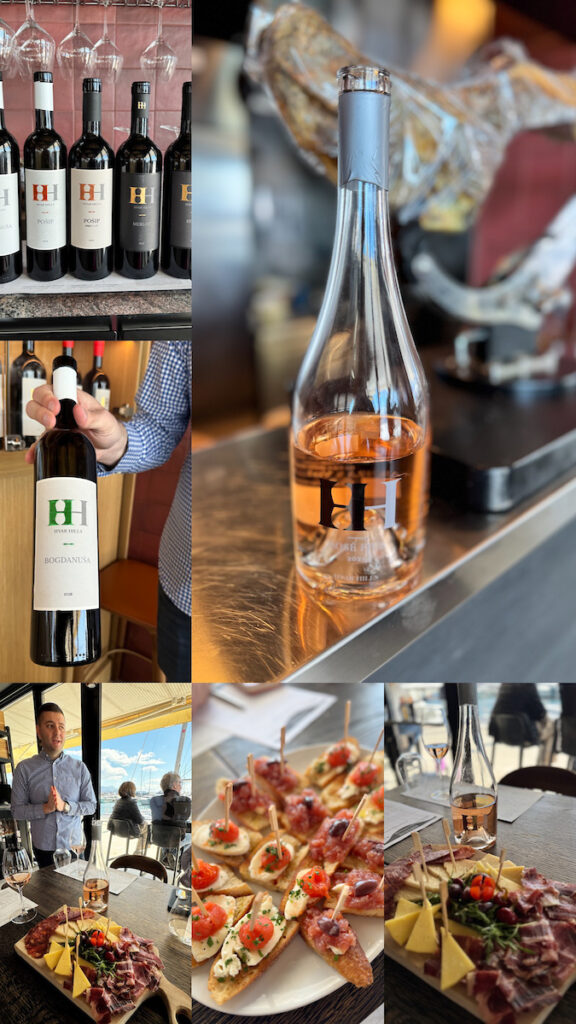
My favorite and possibly the best wine so far of my trip was the Pharos Maximvs 2019, made from Plavac Mali, another indigenous grape from Dalmatia. It’s big, it’s bold, it’s so rich and juicy. Aged 2 years in new oak, then 2 years in the bottle. While expensive and difficult to cultivate, the grapes grow beautifully on the rocky hills. They truly shine in this one. They made only 2,000 bottles, and I’m so glad I got to try it.
After Hvar Hills, we went to Markus Tasting Room, a beautifully hip spot with great panoramic views from the patio and a fun wine-cave-esque interior. It has a very elevated, sophisticated feel With help from a Canadian investor, their winery recently had a huge expansion, now standing at 22 hectares of vineyards.
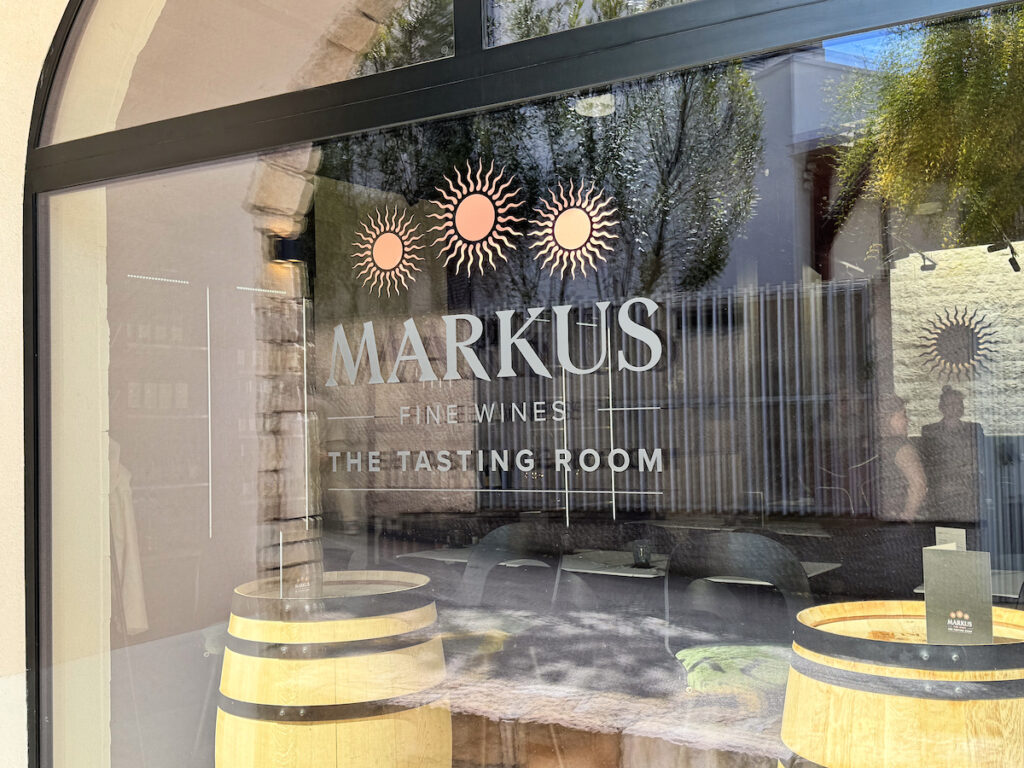
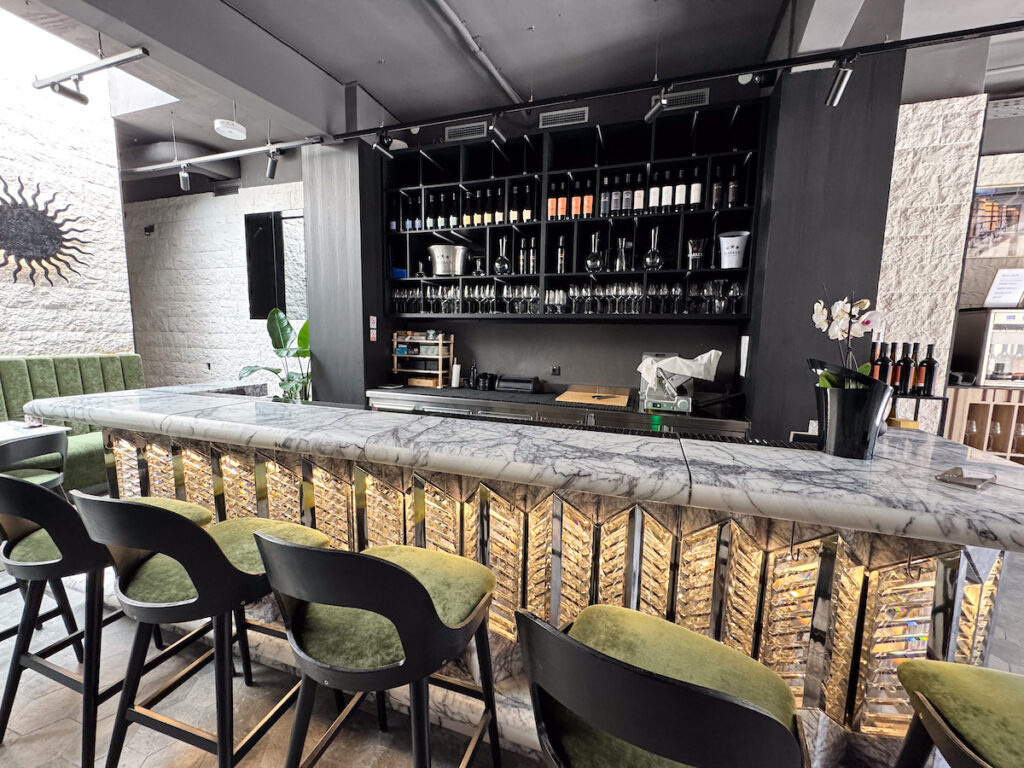
Ivona Jeličić and her husband, the owners of Markus Fine Wines, are very focused on Dalmatian heritage, local grapes, but modern winemaking. They are using the latest and most sophisticated technology and practices to create elegant and sophisticated wines. They have a beautiful rosé made of indigenous grapes with a fruity red berry taste and a really luscious almost honey-lemony Chardonnay.
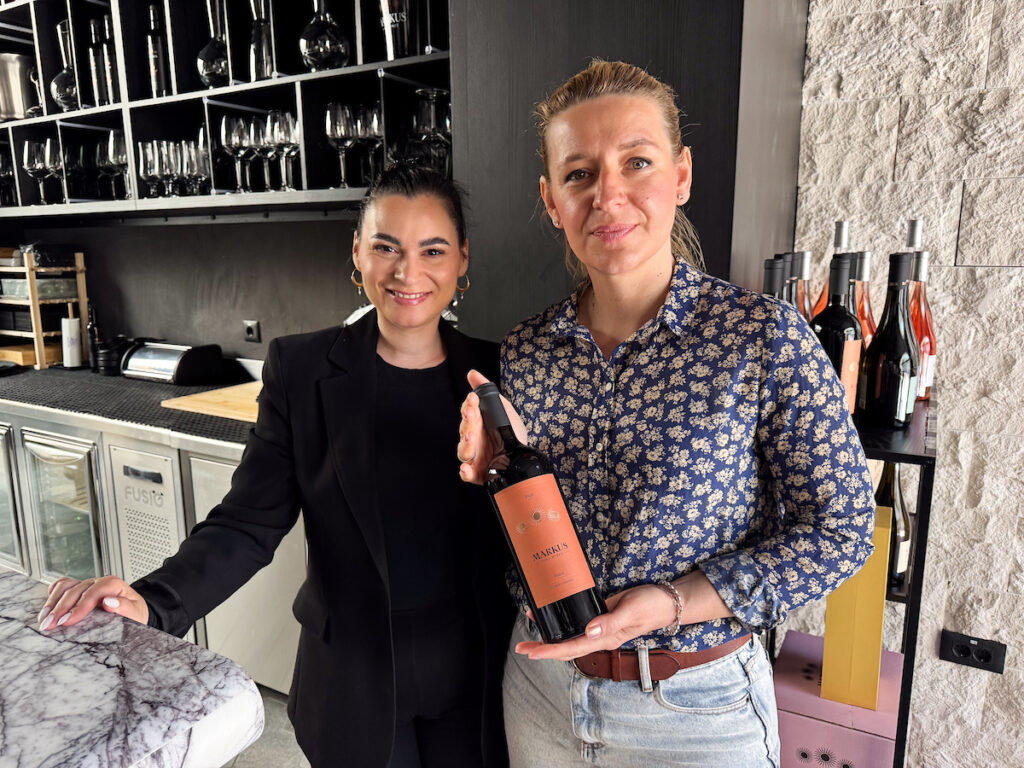
Kastel Sikuli Winery
After a fabulous morning and early afternoon of wine and light snacks, we headed to Kastel Sikuli Winery for a delicious late lunch…and more wine pairings of course! Kastel Sikuli hosted 2 other local wineries, so we tried an additional 12 wines. The highlights for me were a delicious Pošip/Chardonnay Sparkling from Kastel Sikuli, a steel fermented Maraština (another amazing indigenous grape!) from Matela Wines, and a 2019 Glavinuša (yet another unique indigenous varietal!) also from Matela. Everyone also loved the 2024 Rose from Vuina Winery.
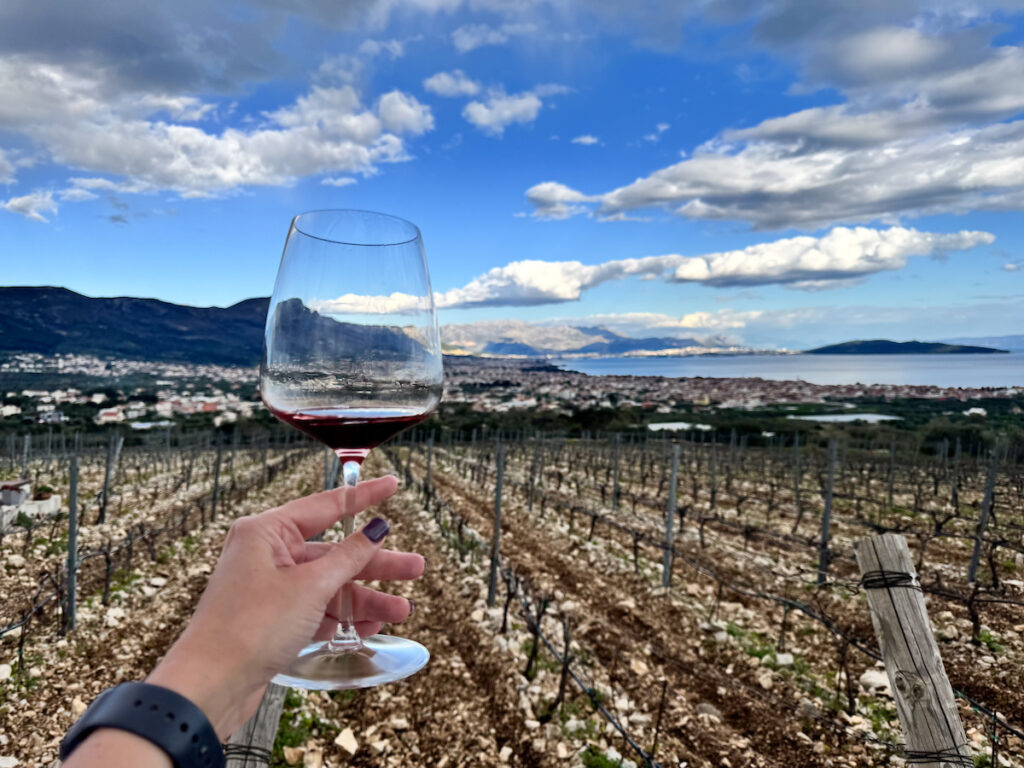

The Kastel Sikuli Winery location and views were simply breathtaking and the food pairings made this the absolute perfect location for lunch. This was the first place of many on my trip where I didn’t want to leave. The family put so much care into preparing the food and wine, and I could have spent days here admiring the view.
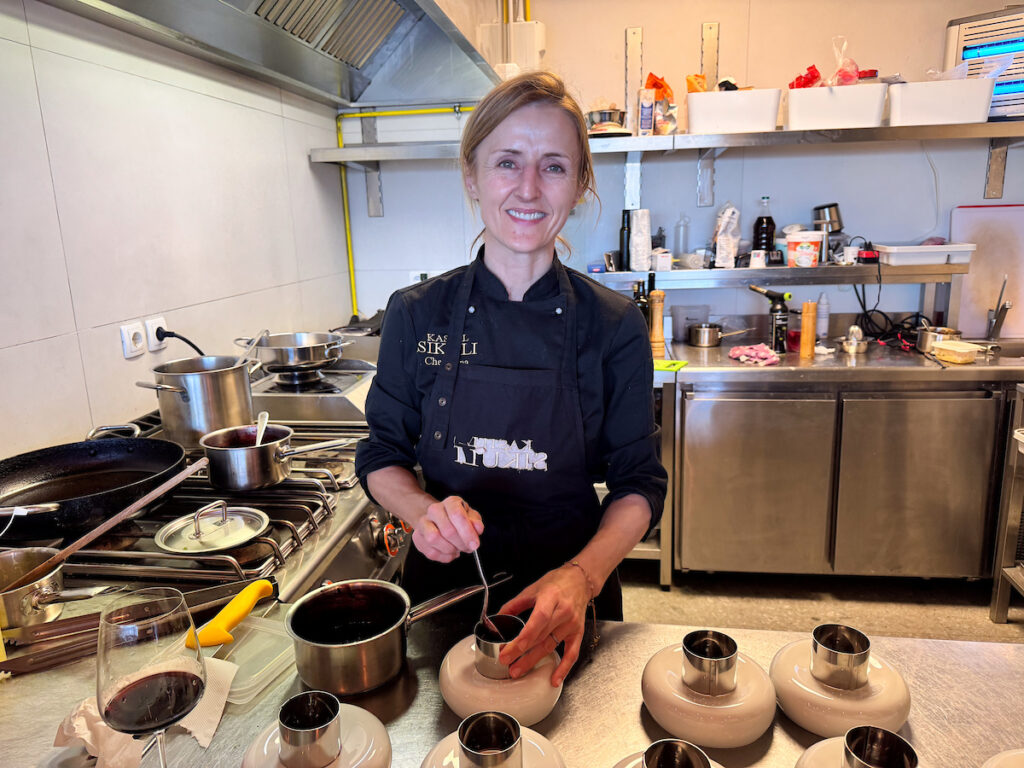
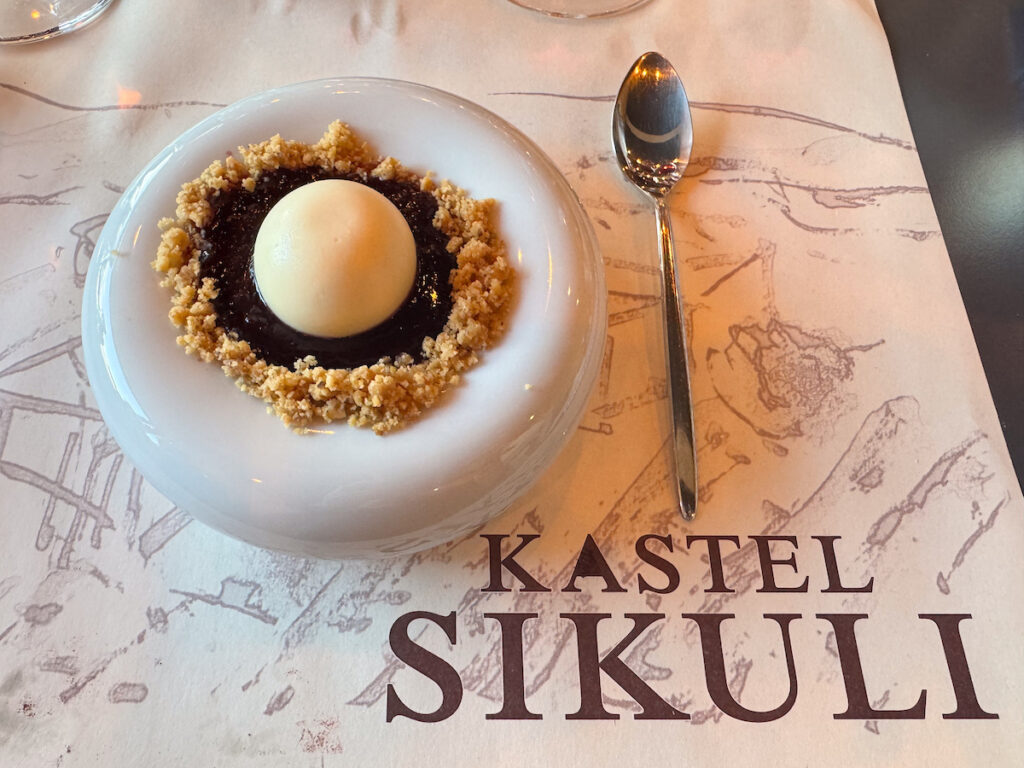
Only one barrel of Glavinuša was ever made, making it very special. I will never taste that wine again. What an absolutely incredible moment to share with a winery and fellow wine lovers.
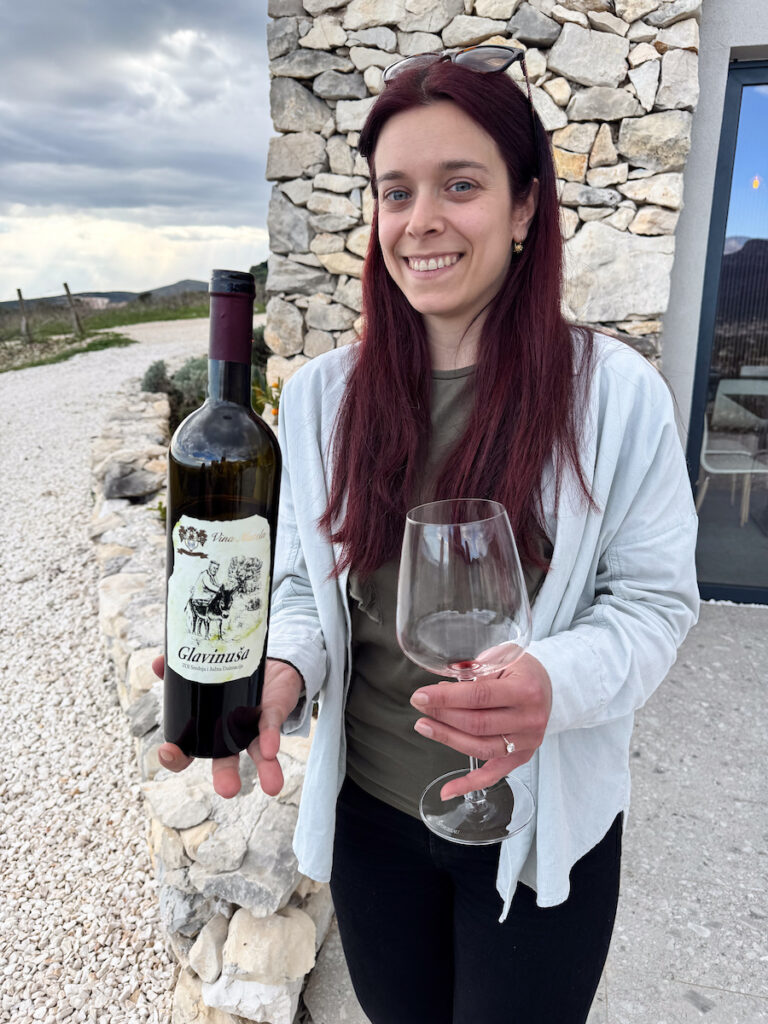
Day 4: A Visit to Brač island (Monday, March 31)
I took my first ferry ride from Split today to Brač island. If you need to get to any of the islands, the typical way from the mainland is to take a ferry. From April to October, they run constantly from Split and Dubrovnik. There are quick catamaran style ones for walk ons, and slower big ones that take cars.
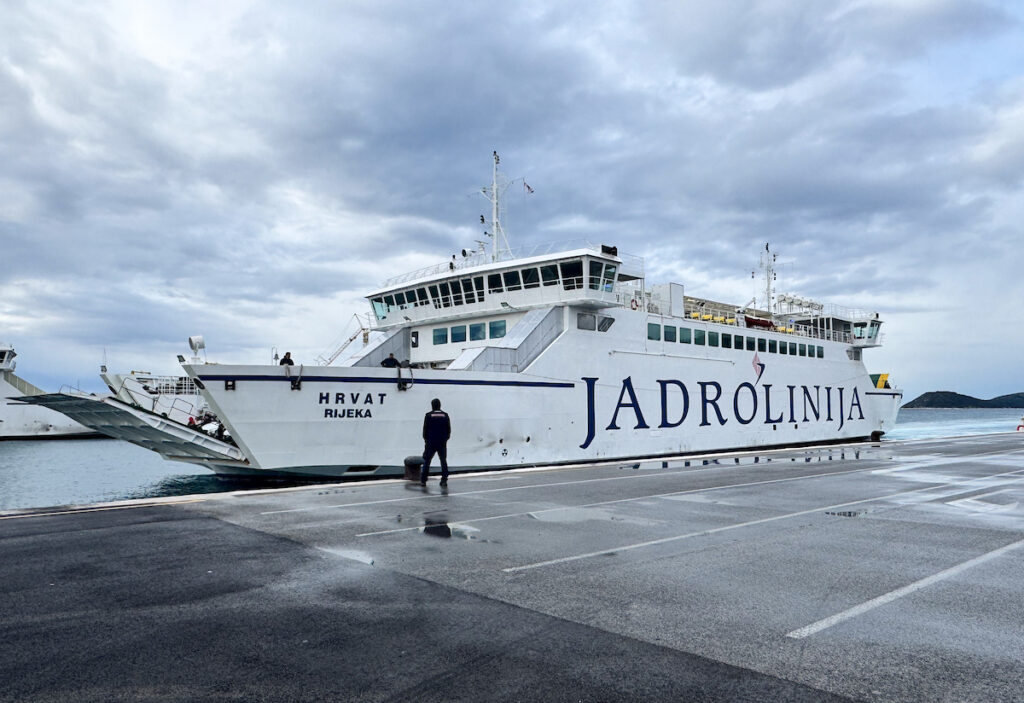
I took the ferry from the main terminal in Split, it was cold and windy and somewhat wet on the crossing. The island of Brak is pretty mountainous and forested – very popular with hikers and explorers, but also has wineries and olive oil.
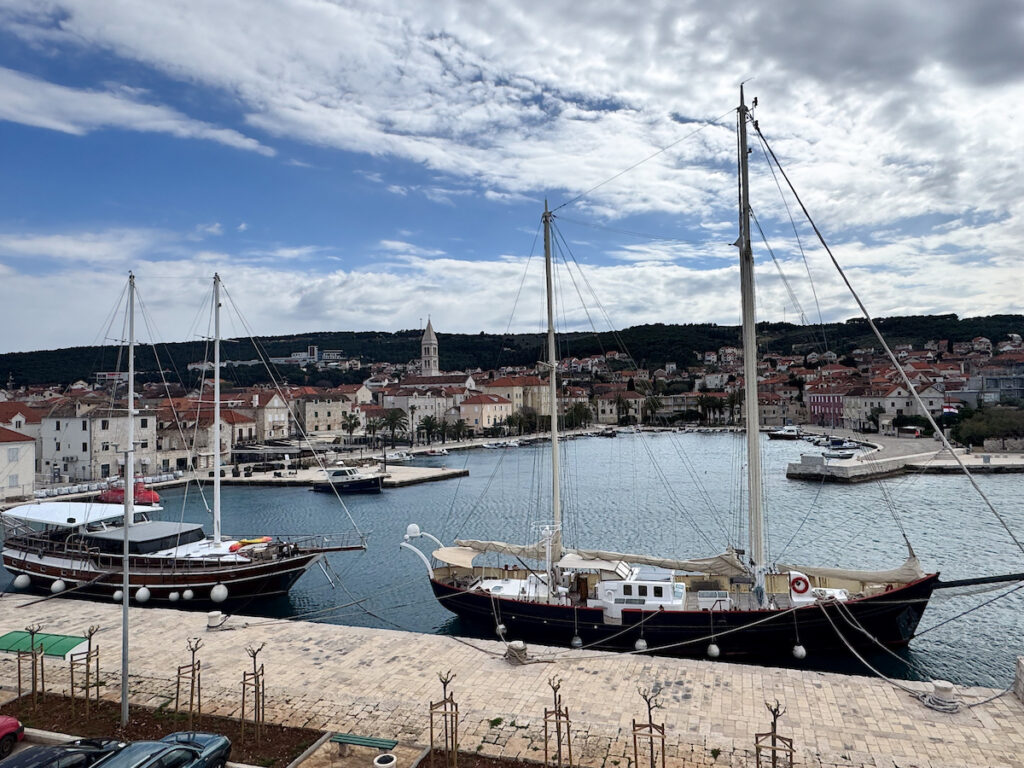
Petar, the operations manager for Stina Winery, picked me up in Brač and drove me out to the vineyard. Stina is one of the largest wineries and exporters in Dalmatia. While Santana’s Black Magic Woman blared on the car speakers, we passed breathtaking views on both sides as the cliffs rose above the Adriatic sea. A huge classic rock fan, Petar was excited for his trip to see Eric Clapton at the Royal Albert Hall.
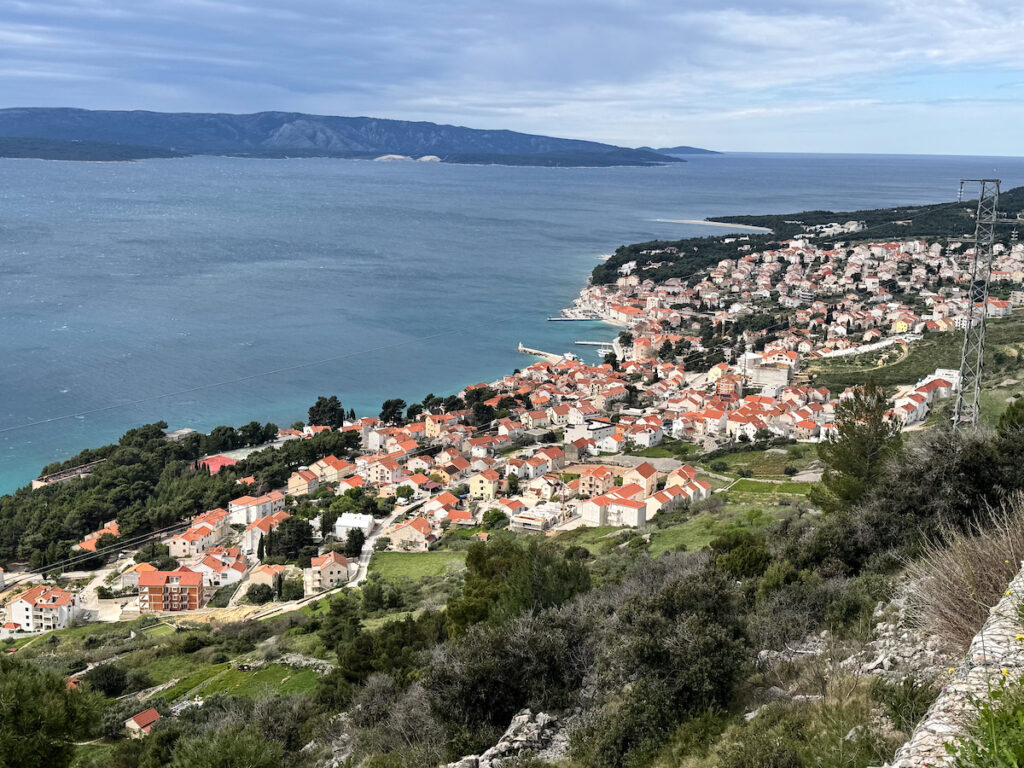
As we drove up, I marveled that they could even grow wine here. The vineyards cling to the side of the mountains amidst rocky terrain. How are the grapes even alive??
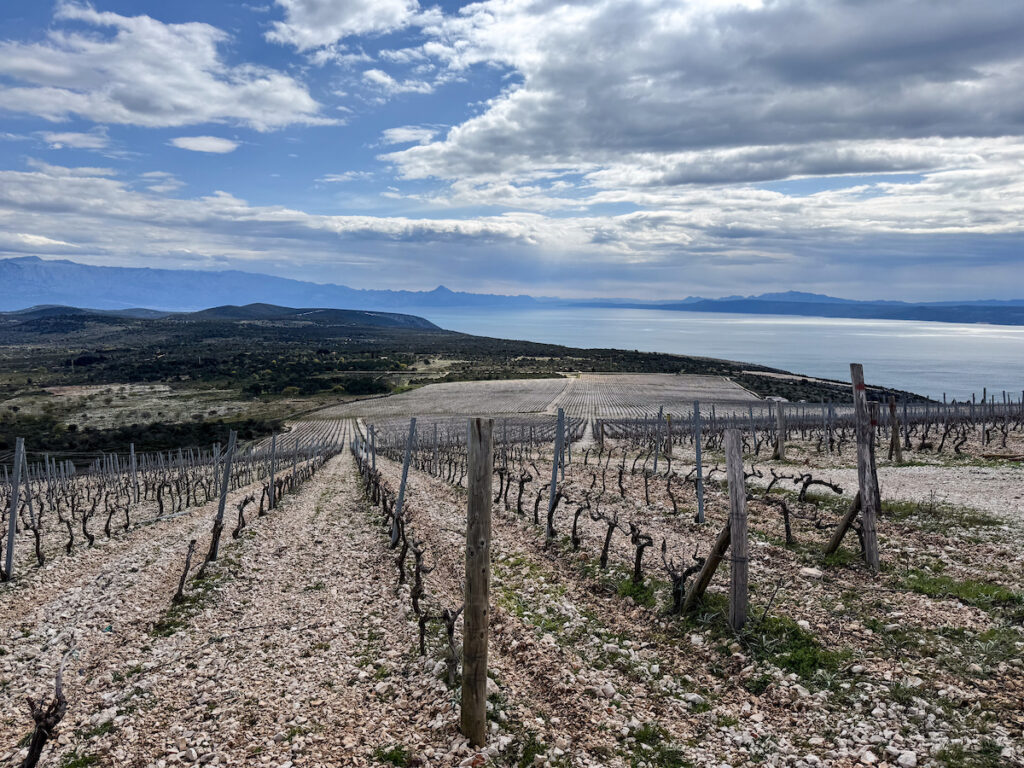
The answer is patience. And care. And close attention to the climate. Last year, the summer was too hot and they had to harvest the grapes far too early on August 6. Farmers do most of the harvesting at night because the summer gets so hot. Global warming is changing how they handle the harvest here.
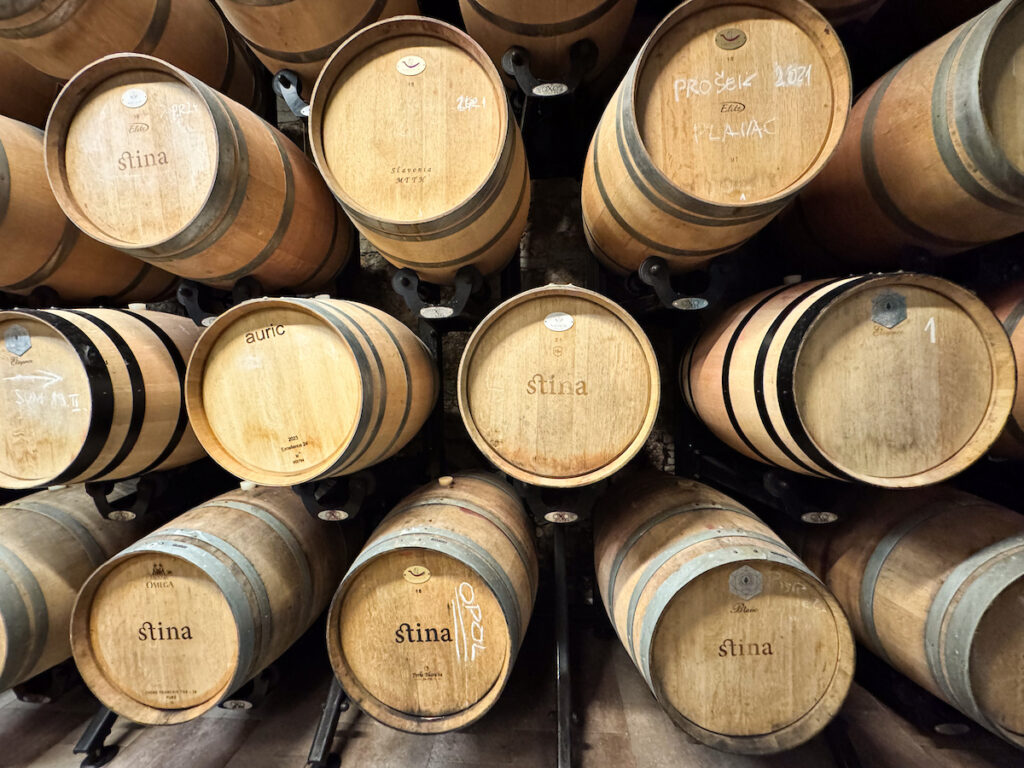
I saw the whole operation; it was very cool. Stina means stone and it’s everywhere in the vineyard. From the design of the label – made to represent stone for the terroir of the region – to the very way they crush the grapes for the wine.

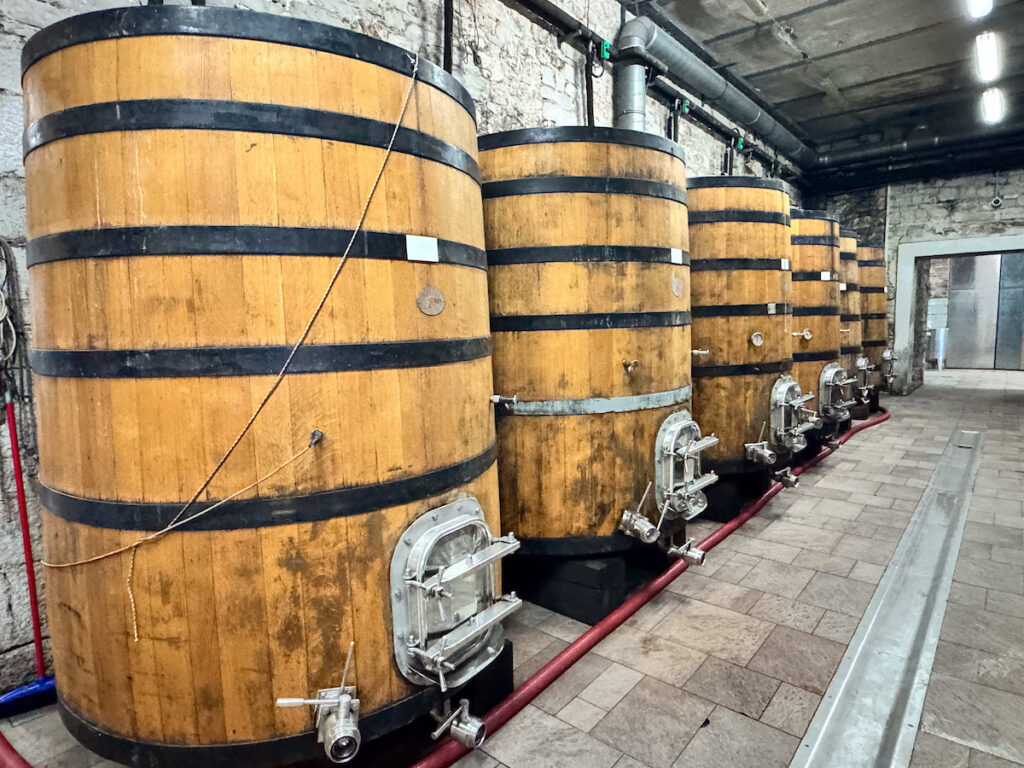
The brand is centered in art. A local artist was commissioned to make sculptures from the stone, and local stone makes up the architecture of the winery and tasting room. The labels are also made for customers to draws on them as a blank canvas. Many of customers have sent back the label artwork and they are on display in the tasting room.
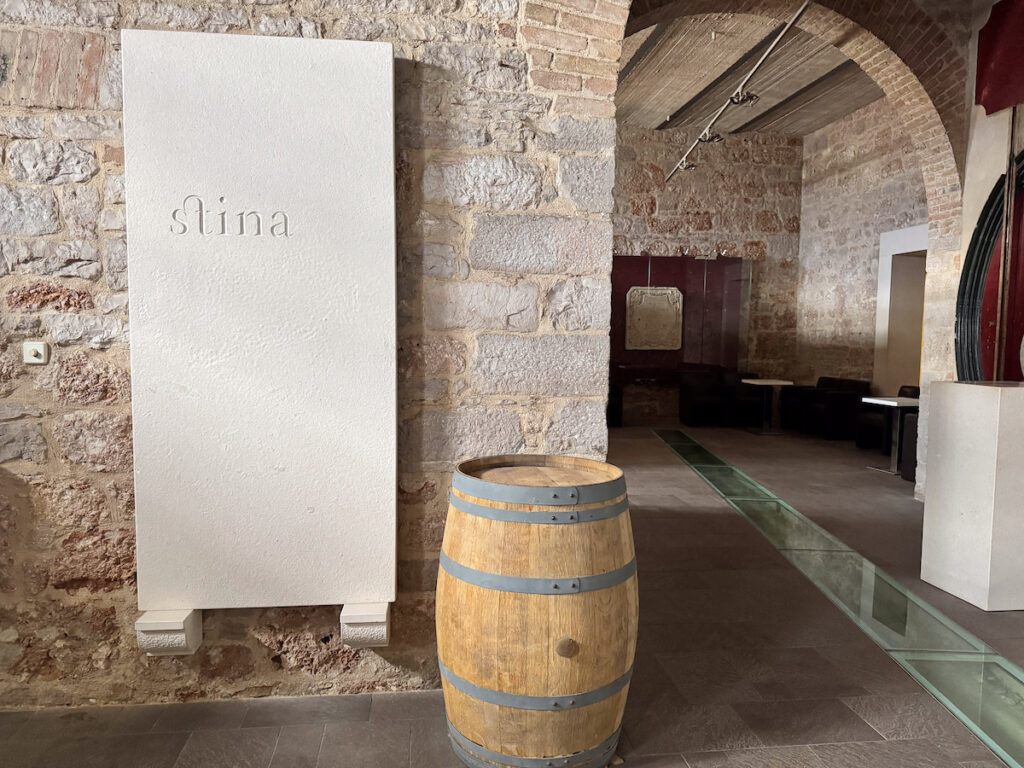

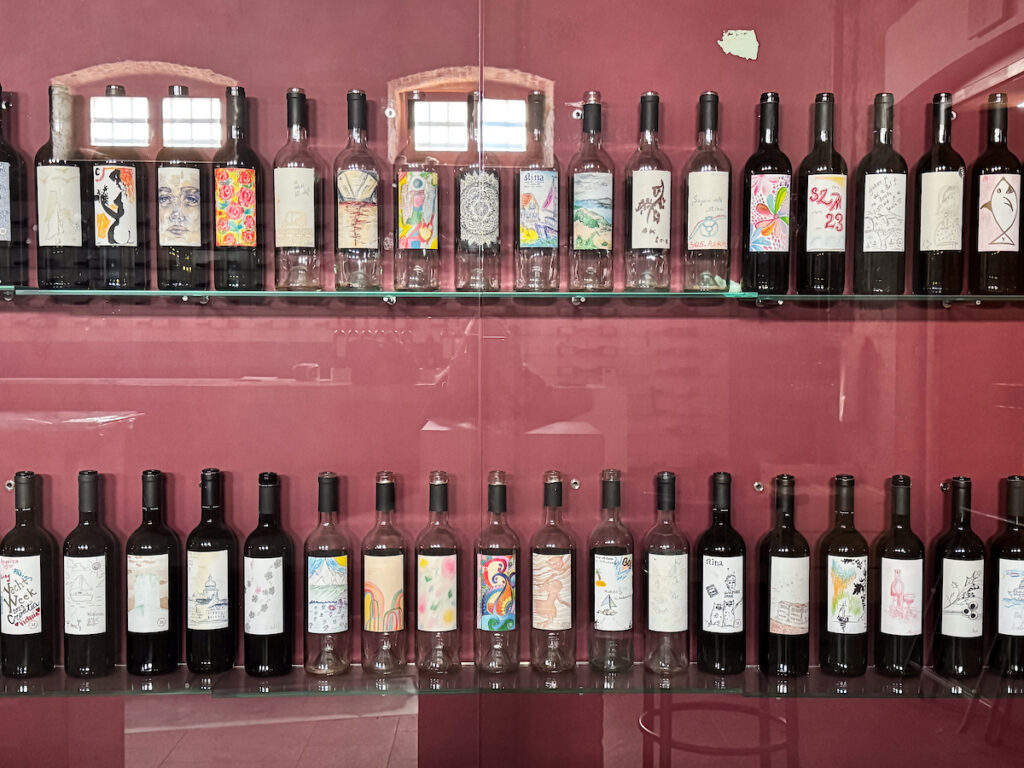
After exploring the winery, I was starving. Petar took me to a local restaurant called Konoba Kopacina, which specializes in lamb. I had lamb steak and chicken schnitzel, with apple streusel for dessert.
In the afternoon, I took the ferry back to the hotel in Split, and spent the rest of my day resting at the Meridien before I packed for my next stop.
Stay tuned for our exploration of our next coastal stop Korcula Island in Part 2.

